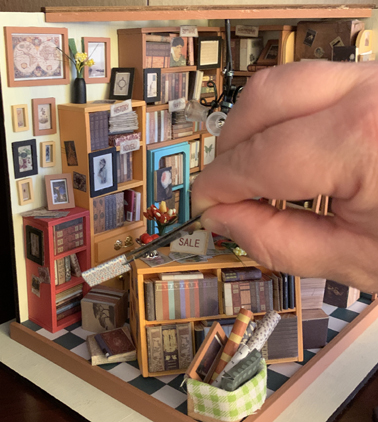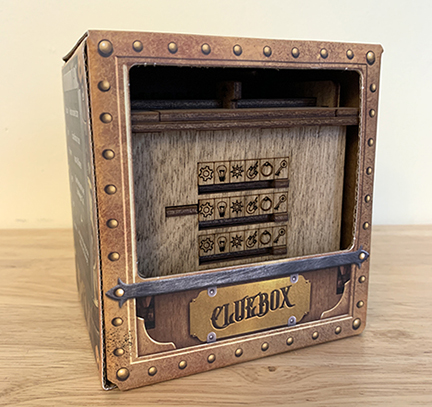 Always searching for more escape room inspiration, Katie was delighted when her mom sent her a dandy little escape challenge that fit right in the palm of her hand. Though it was small, but packed a mighty punch! Take it away, Katie!
Always searching for more escape room inspiration, Katie was delighted when her mom sent her a dandy little escape challenge that fit right in the palm of her hand. Though it was small, but packed a mighty punch! Take it away, Katie!
The Cluebox “Escape Room in a Box” is produced by iDventure Machine Factory and retails for around $40 on Amazon. There are three different Clueboxes available for purchase: Captain Nemo’s Nautilus, Davy Jones Locker and Schrödinger’s Cat. The suggested age range is 14+ and the estimated playtime is 60 minutes.
I tackled Schrödinger’s Cat. The wood puzzle box is packaged in a sturdy cardboard box that is covered with images with a funky steampunk motif, including a very cool cat. Inside the packaging is an informational note (in multiple languages) briefly describing the quantum mechanics experiments conducted by Erwin Schrödinger in the 1930s. You are tasked with figuring out how to rescue his cat from inside the wood puzzle box.
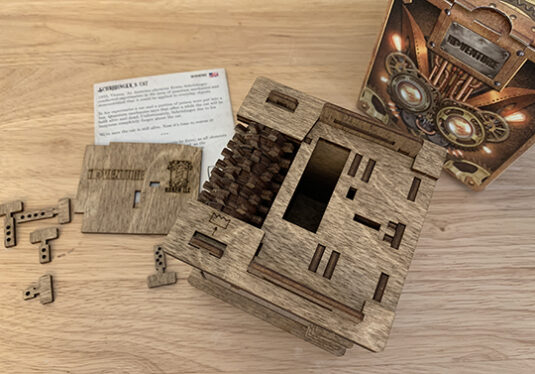
The escape room itself is a robust wood box with various gears, interesting sliding tabs, and is covered in hieroglyphics that one would rightly assume will be used to solve the mystery. I took some time to carefully examine the box, looking at all the parts and pieces. It didn’t take long before I found a note on one of the tabs that read “Start,” and it had me follow a series of arrows around the sides of the box to the bottom. There, the arrows stopped near tabs that signaled the start of the room.
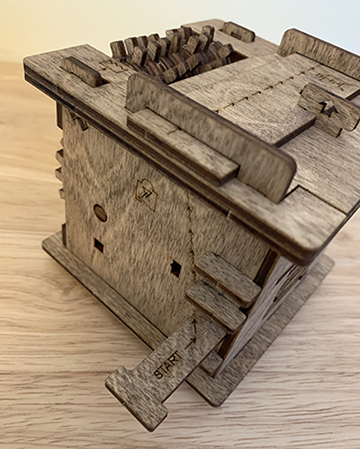
The informational note also clearly states that all elements of the box should open smoothly, so you don’t need to force anything and no guessing is required. There is a website link that offers hints if you get stuck and are unable to move on. I always try to solve escape rooms without hints, but I did have to get a bit of assistance with one part (more on that later).
No spoilers, I promise! I methodically worked my way through the puzzles. After about 30 minutes, I got stuck on a brainteaser that I believed involved the strange eye staring from one side of the box. I twisted, tapped, and moved everything around and could not figure out what was going on with the eye. After about 20 minutes without making any progress, I reluctantly visited the hint website to get a tiny bit of help. Turns out I was right about the eye, and after working through the final riddle, I was able to successfully release Schrödinger’s cat. My total time to solve: 72 minutes.

The iDventure’s Clueboxes are a fun addition to the realm of escape rooms. The wood box is beautifully manufactured and the puzzles are a mix of relatively easy to quite difficult. I agree with the suggested age range and feel an adult would need to assist younger children. It is definitely designed for single players, though it could be a fun party game. One aspect I really like is the box can be reset to its initial state after a person finishes the escape room, which allows for others to participate in a future challenge. The solution compartment is also big enough to hold a gift certificate or little note, so you can hide a small present inside as an added bonus for escaping the room.
Cluebox is perfect for an hour or two of individual challenging fun, and it gets my seal of escape room approval!

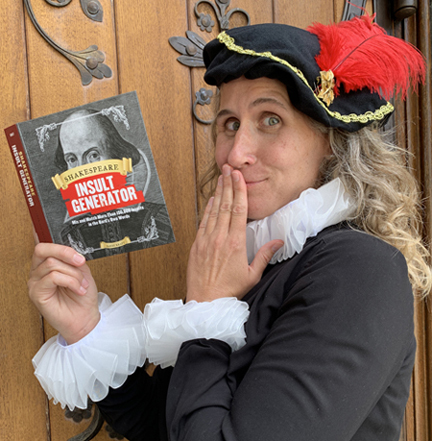 Prepare to “Insult, exult, and all at once” (As You Like It, Act 3, Scene 5). Because today we’re reviewing the epic Shakespeare Insult Generator from Becker & Mayer! Wither you stub your toe on a rock, or are trading barbs with your bitter rival…if your situation requires a fiery oath or stinging retort, you are in good hands with the Bard!
Prepare to “Insult, exult, and all at once” (As You Like It, Act 3, Scene 5). Because today we’re reviewing the epic Shakespeare Insult Generator from Becker & Mayer! Wither you stub your toe on a rock, or are trading barbs with your bitter rival…if your situation requires a fiery oath or stinging retort, you are in good hands with the Bard! Retailing for around $9 on Amazon, this little spiral-bound volumes includes 162 Shakespearean words. The pages are divided into three sections (the top and middle sections are adjectives, the bottom section is a noun). The sections can be quickly flipped to create 150,000 original insults.
Retailing for around $9 on Amazon, this little spiral-bound volumes includes 162 Shakespearean words. The pages are divided into three sections (the top and middle sections are adjectives, the bottom section is a noun). The sections can be quickly flipped to create 150,000 original insults.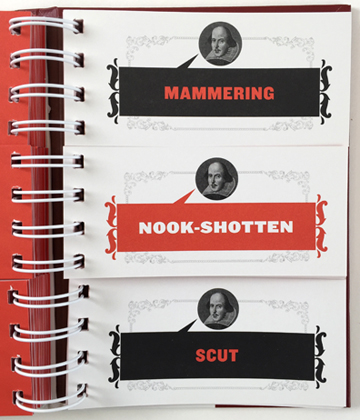 The cool thing is when you flip each section, the word is defined on the back. So if you are wondering what a “scut” is, it’s actually “the short, erect tail of a deer.”
The cool thing is when you flip each section, the word is defined on the back. So if you are wondering what a “scut” is, it’s actually “the short, erect tail of a deer.” In addition to being visually pleasing, the book comes with a fascinating and humorous introduction. Among other things, you learn that words marked with a feather icon means they were most likely invented by Shakespeare. Words marked with an “N” are ones he only used once (also referred to as “nonce” words). As you can see in the above photo, all three words are nonce. Amazingly, of the 162 words in the book, 22% were invented by Shakespeare, and 64% are nonce! That’s some amazing word-smithery, that is.
In addition to being visually pleasing, the book comes with a fascinating and humorous introduction. Among other things, you learn that words marked with a feather icon means they were most likely invented by Shakespeare. Words marked with an “N” are ones he only used once (also referred to as “nonce” words). As you can see in the above photo, all three words are nonce. Amazingly, of the 162 words in the book, 22% were invented by Shakespeare, and 64% are nonce! That’s some amazing word-smithery, that is. When Katie saw this DIY miniature library online, she was entranced. It’s perfectly adorable with its tiny little books and knick knacks on the bookshelves and darling framed pictures and actual working chandelier with four lights. But she did NOT love the lengthy process of constructing it. It took 46 hours. 46 HOURS. Katie, share with us your epic journey…
When Katie saw this DIY miniature library online, she was entranced. It’s perfectly adorable with its tiny little books and knick knacks on the bookshelves and darling framed pictures and actual working chandelier with four lights. But she did NOT love the lengthy process of constructing it. It took 46 hours. 46 HOURS. Katie, share with us your epic journey…
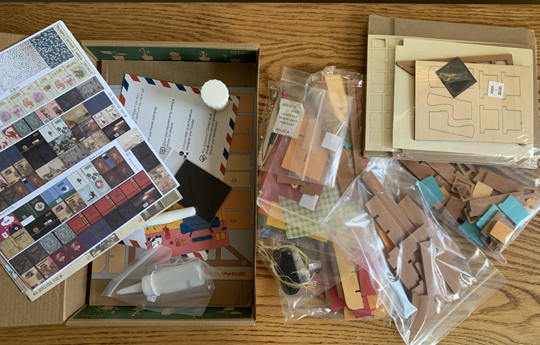
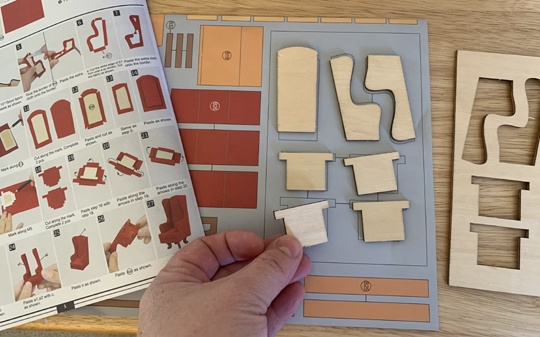 So many pieces! So much glue! Oftentimes I had to be creative with figuring out ways to assist the various parts to hold together as the glue dried. Elastic hair bands for the win!
So many pieces! So much glue! Oftentimes I had to be creative with figuring out ways to assist the various parts to hold together as the glue dried. Elastic hair bands for the win!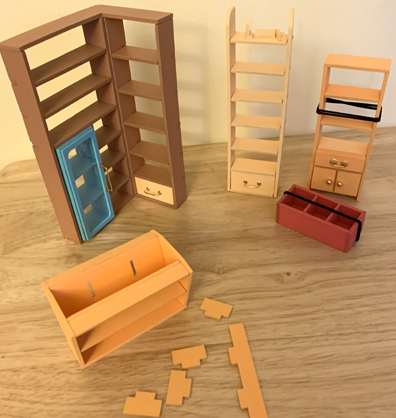
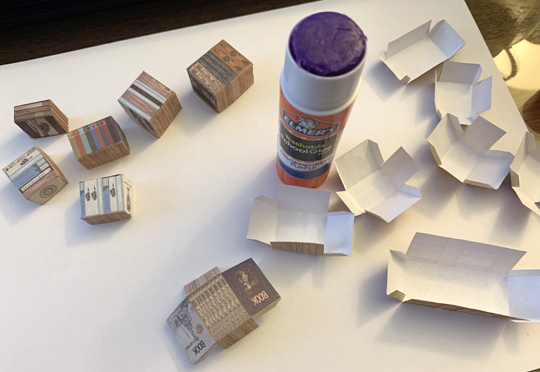 The pièce de résistance was constructing the walls and floor of the bookstore, as well as creating the realistic chandelier that provided the gentle glowing light. The bookstore was relatively easy. The chandelier was complicated. And frustrating. And it nearly didn’t happen because I almost ran out of wire necessary to provide electricity to the bulbs.
The pièce de résistance was constructing the walls and floor of the bookstore, as well as creating the realistic chandelier that provided the gentle glowing light. The bookstore was relatively easy. The chandelier was complicated. And frustrating. And it nearly didn’t happen because I almost ran out of wire necessary to provide electricity to the bulbs.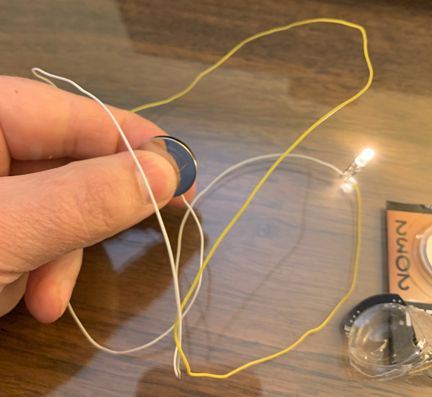
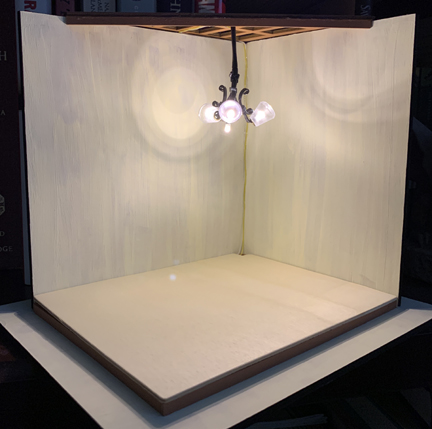 I was just about ready to furbish the bookstore, but I still had to finish the wing back armchair. The various bits and pieces of the chair were ready to go, but I was not looking forward to the actual construction. Begrudgingly, I used every last bit of my dogged patience to put the chair together. It’s not pretty, in fact it’s far from perfect. One side of the chair is slightly taller than the other and there are many areas of the wood frame showing through the red cloth, but I finished it.
I was just about ready to furbish the bookstore, but I still had to finish the wing back armchair. The various bits and pieces of the chair were ready to go, but I was not looking forward to the actual construction. Begrudgingly, I used every last bit of my dogged patience to put the chair together. It’s not pretty, in fact it’s far from perfect. One side of the chair is slightly taller than the other and there are many areas of the wood frame showing through the red cloth, but I finished it.